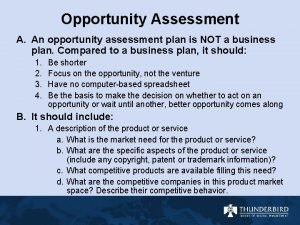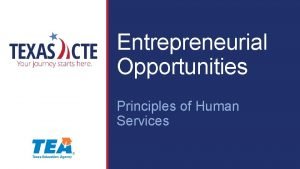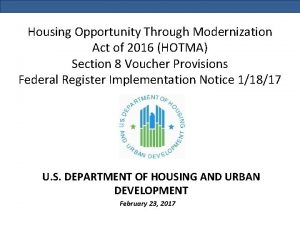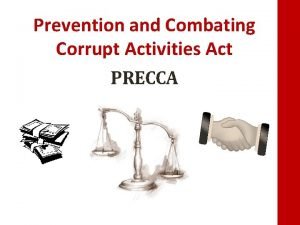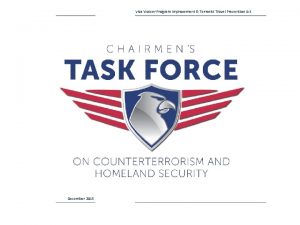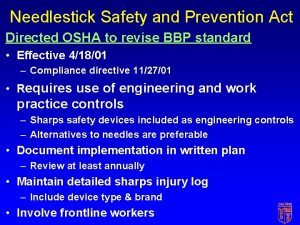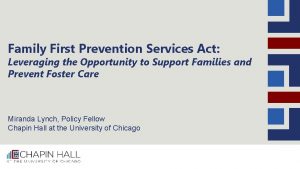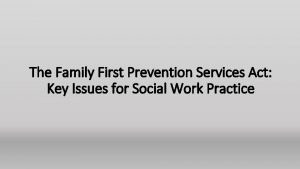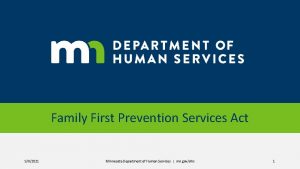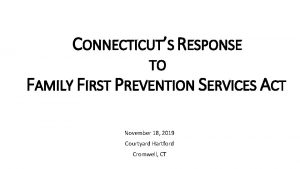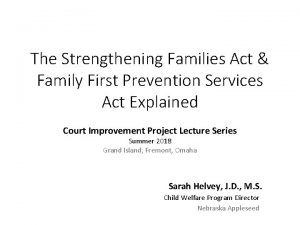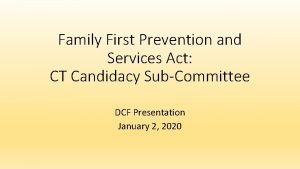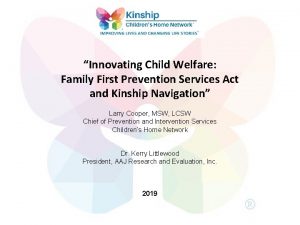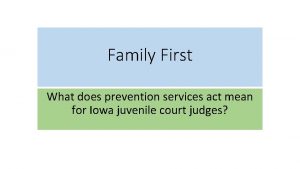Family First Prevention Services Act Leveraging the Opportunity














- Slides: 14

Family First Prevention Services Act: Leveraging the Opportunity to Support Families and Prevent Foster Care Miranda Lynch, Policy Fellow Chapin Hall at the University of Chicago

Family First Prevention and Services Act: A transformational opportunity Prevention Evidence Based Interventions High Quality Group Care Other Major Provisions

Prevention Option Prevention • Beginning Oct 1, 2019, states will have the option to use title IV-E federal funds for evidence-based preventive services/programs (EBPs) for: • children at imminent risk of foster care entry, their parents and/or kin caregivers (e. g. , “candidates”) • pregnant and parenting teens in foster care • Prevention services are for children/parents/kin caregivers regardless of income, and defined as: • Skill based parenting programs – individual and family counseling, parenting skills and parent education • Substance abuse treatment and prevention • Mental health treatment

Prevention Option – Potential Populations Prevention Who is at imminent risk of entering foster care? Indicated/substantiated investigations not resulting in removals Narrow Families receiving preventive services on a voluntary basis, including unfounded investigations Medium Narrow Families with known risks for child welfare involvement, including substance use or housing instability, families receiving alternative response Medium Broad Families in community areas with high confluence of known community level risks Broad

Strategic Plan for the Prevention Option • To elect the option, states must seek approval from the federal government of a statewide five-year Prevention Plan that prompts careful consideration of: Prevention selected EBPs target populations intended outcomes eligibility for services workforce development and prevention caseloads • mechanism for assessing risk/safety of children served • mechanism for prevention planning with families • • • trauma-informed approach to prevention • coordination and collaboration with partners to support a full continuum of care • evaluation and continuous quality improvement for prevention programs

6 Evidence for Prevention Services Evidence Based Interventions • HHS will conduct a systematic review of services & rate the level of evidence via a Federal clearinghouse. • Initial programs reviewed by the Clearinghouse as of 11. 13. 19: Parenting Skills • Nurse-Family Partnership (WS) • Health Families America (WS) • Parents as Teachers (WS) Substance Use Disorder • Motivational Interviewing (Pending - NYR) • Multisystemic Therapy (WS) • Families Facing the Future (S) • Methadone Maintenance Therapy (P) Mental Health • Parent-Child Interaction Therapy (WS) • Trauma Focused-Cognitive Behavioral Therapy (P) • Multisystemic Therapy (WS) • Functional Family Therapy (WS) WS – Well Supported; S – Supported; P- Promising; NYR – Not Yet Rated; X – Rated as not meeting evidence criteria

Fiscal Matters for the Prevention Option • No income test for federal $ • Partial federal reimbursement for state expenditures on services, related administrative costs and training • Assurance not to replace state historical spending on prevention EBPs • Prevention program is payer of last resort • Requirement to spend on services at highest evidence level

Prevention Opportunities ü Transforming the child welfare focus from foster care to prevention, increased family stability, and well-being. ü Investing in evidence-based interventions. ü Applying a trauma-responsive lens to the continuum of prevention services. ü Partnering across systems (mental health, substance use disorder, juvenile justice, early childhood, health, etc. ) to align prevention efforts. ü Scaling up preventive service and de-scaling foster care. ü Maximizing federal reimbursement of secondary/tertiary prevention to free up funding for primary prevention.

Framework for Assessment, Planning, Readiness: Domains of Inquiry Transformation Framework Sequencing and Jurisdictional Concerns Practices, Service Array, and Policy Data and Evidence Implementation Capacity & Strategy Administrative and Fiscal

Example: District of Columbia “The District’s CFSA and its community partners have developed a plan that is grounded in a commitment to preventing child abuse and neglect and unnecessary removal of children from their families and to strengthen the ability of families to care for their children safely…The plan represents a thoughtful re-conceptualization of the way public child welfare agencies serve children and families…” Jerry Milner, Associate Commissioner of the Children’s Bureau.

Family First Target Population Below content created by the District of Columbia's Child and Family Services Agency for inclusion in its Prevention Plan Front Porch Target Sub-Populations 1. Children served through the Healthy Families/Thriving Communities Collaboratives (the Collaboratives) following a CPS investigation or closed CFSA case. 2. Children who have exited foster care through reunification, guardianship, or adoptions. 3. Children born to mothers with a positive toxicology screening. Front Door 4. Children served through CFSA’s In-Home Services program, which offers intensive case management and service referrals to families. 5. Pregnant or parenting youth in/recently exited foster care with eligibility for services ending five years after exiting foster care. 6. Non-ward children of pregnant or parenting youth in or recently exited foster care with eligibility for services ending five years after exiting. 7. Siblings of children in foster care who reside at home and have assessed safety concerns. 10

District of Columbia: Leveraging Family First in a Prevention Continuum Family First Wraps around the narrow requirements of Family First to support and strengthen DC families in their own neighborhoods through primary prevention. Families First DC: Neighborhood-based strengthening approach Evidence-based programs to support pregnant & parenting youth in foster care and foster care candidates

Theory of Change Below content created by the District of Columbia's Child and Family Services Agency for inclusion in its Prevention Plan 13

Contact Information Chapin Hall is an independent policy research center at the University of Chicago that provides public and private decisionmakers with rigorous research and achievable solutions to support them in improving the lives of children, families and communities. Miranda Lynch Policy Fellow Chapin Hall mlynch@chapinhall. org 703 -627 -8420
 Primary prevention secondary prevention tertiary prevention
Primary prevention secondary prevention tertiary prevention Opportunity recognition and opportunity assessment plan
Opportunity recognition and opportunity assessment plan Child, youth and family services act, 2017
Child, youth and family services act, 2017 Prepaid legal success
Prepaid legal success Entrepreneurial opportunity in human services
Entrepreneurial opportunity in human services Macbeth summary
Macbeth summary Injuries first aid
Injuries first aid Housing opportunity through modernization act
Housing opportunity through modernization act Veteran employment opportunity act
Veteran employment opportunity act Precca
Precca Travel prevention act of 2015
Travel prevention act of 2015 Osha needlestick protocol
Osha needlestick protocol International business strategy
International business strategy Brand leveraging strategies
Brand leveraging strategies Leveraging social media for talent acquisition
Leveraging social media for talent acquisition

